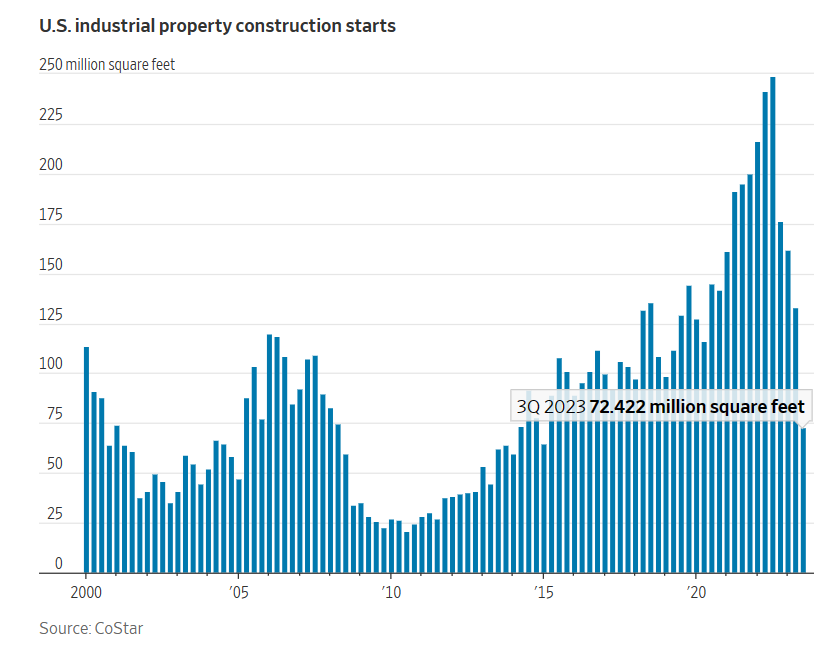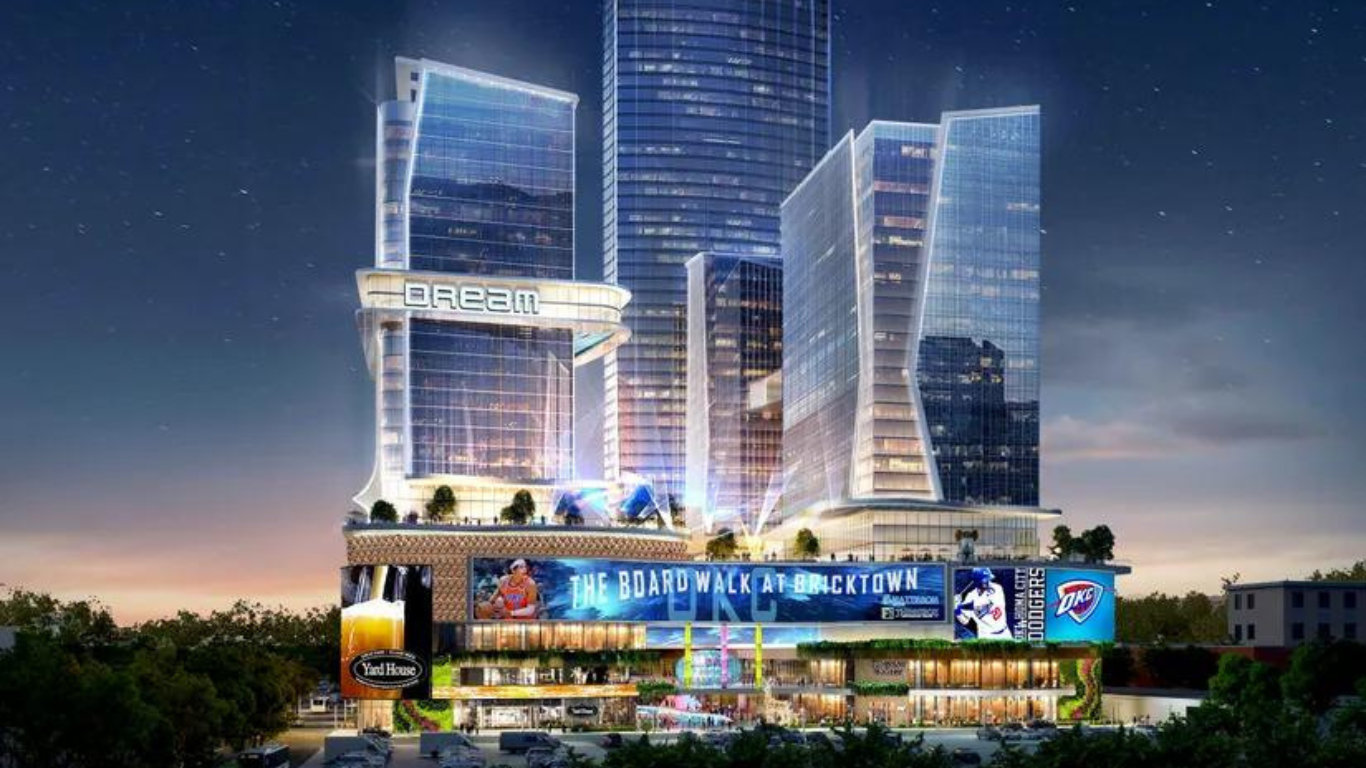Lennar's Big Sale, The Metal Box Boom & a Skyscraper in OKC
A Big Multifamily Temperature Check
Lennar's Jon Jaffe and Stuart Miller and Quarterra's Jeff McCall (Lennar, Quarterra, Getty) | Source: The Real Deal
Lennar Begins Marketing 11,000 Unit Portfolio
Despite the slowdown in transactions volumes, uncertainty about rates and high-profile short sellers attacking commercial mortgage REITs, homebuilder Lennar (LNR) has decided to come to market with an 11,000 unit multifamily portfolio out of their development platform Quarterra.
Estimates put the value of the portfolio in the $4 billion range. Quite a transaction considering all multifamily transactions in October (the latest month for which we have data) amounted to just over $6 billion. Per the Real Deal, JLL has been retained to market the portfolio. While Lennar could choose to split it up, at this point they appear to be entertaining only buyers for the entire portfolio.
Speculation has shifted to who could (or would) make such an aggressive bet at this point in the cycle. Aside from the usual private equity players, it's possible a sovereign wealth fund or perhaps even one of the public multi-family REITs could make a run at this portfolio.
A potential challenge is that Lennar's portfolio is primarily higher-end units, many of which are in California, although exact details of the assets have not fully been released.
According to Bisnow, "fresh data shows the impact of elevated supply could fall heaviest on the high-end properties that make up the bulk of scheduled new deliveries." Whoever the buyer ends up being, the price will have a significant impact on multifamily sentiment for 2024.
Metal Boxes Everywhere
The Warehouse Building Boom Ends
The Wall Street Journal reports that industrial construction starts fell 48% in the first nine months of the year. As we covered in our Prologis Investor Forum review, traditional development simply doesn't make sense right now. Apparently neither do acquisitions as the same report notes that dollar volume of industrial real estate sales is also down 45%.
Like all real estate asset classes, industrial cannot be evaluated as a monolith. Much of the construction boom has been concentrated in areas with abundant land and relatively flexible zoning. "Indianapolis, Denver and Texas cities Austin, Dallas and San Antonio all had industrial vacancy rates of more than 8% in the third quarter, according to JLL, well above the national vacancy rate of 4.9%." Markets like New York, South Florida and Los Angeles are still seeing high demand for a limited stock of industrial and logistics space. Like all real estate asset classes, industrial cannot be evaluated as a monolith. Much of the construction boom has been concentrated in areas with abundant land and relatively flexible zoning. "Indianapolis, Denver and Texas cities Austin, Dallas and San Antonio all had industrial vacancy rates of more than 8% in the third quarter, according to JLL, well above the national vacancy rate of 4.9%." Markets like New York, South Florida and Los Angeles are still seeing high demand for a limited stock of industrial and logistics space.
Quote Book
The (Proposed) OKC Skyscraper Taller then One World Trade Center 🏗️
“We started thinking about the OKC Thunder and spending a billion dollars, and we are going to have a billion dollars going into our design. We are going to have two big projects going on within two blocks of each other. Option A is we build what we’re already approved for. But Option B is with all these things going on with a downtown entertainment district, let’s see what we can do."
Scott Matteson, Developer (The Oklahoman)
PropTech Comes Back to Earth 🌎
“It was a frenzy, you know. You had a zero-interest-rate environment, which was causing people to go further out on the risk curve,”
- David Eisenberg, Zigg Capital (Bisnow)
Inopportune Zones 🛑
"According to a report from the Treasury’s Office of Tax Analysis, just 1 percent of Opportunity Zones received 42 percent of investment. Zooming out further, 78 percent of all investments went to just 5 percent of the nation’s zones.”
(PropModo)



